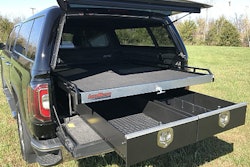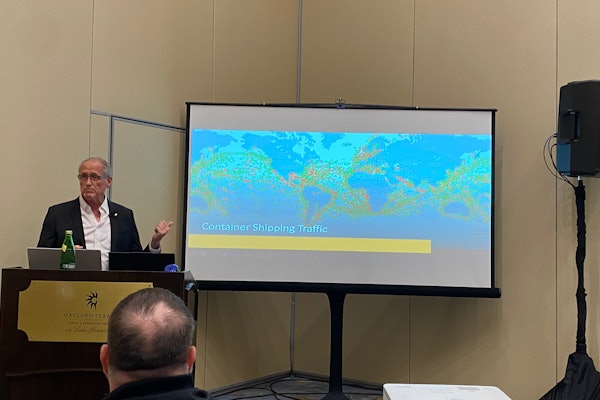By Bill Wade, Wade & Partners
Any discussion of even the near-term truck parts and service future requires us to look closely at four major disruptors, or ‘elephants in the room.’ Our industry has major inflection points that happen to be coming to a head as the next decade approaches:
- Diminished Brands: Fewer than one quarter of American consumers are brand loyal. What does this mean for the 10 or so brands under which certain truck parts are currently marketed?
- Disordered Channels: Customers Create Channels. Their preferences can create erosion or earthquakes. One thing is certain, heavy-duty parts and service hasn’t seen anything like the ‘omni-channel’ approach that is developing today. EVER!
- Disruptive Technology: Both product and the science of distribution. We point out the 10 most prominent disruptors likely to cause major change by 2020, and the product areas likely to draw the greatest attention.
- Disappearing People: Willy Has Left the Building. Can Alexa or Siri take up the slack? Technological change is reducing the usefulness of employees’ existing skill sets. Our industry can no longer be passive consumers of ready-made human capital.
It Will Happen Fast!
With so many vehicle technologies emerging on so many fronts so fast, every advance seems to be billed as “the next big thing.”
News that:
- UPS, WalMart and J.B. Hunt all ordered a few of Tesla’s new electric Class 8 tractor; or
- Cummins announced electric tractor plans; or
- GM, Volvo and Daimler plan to ditch internal combustion engines; or
- Chinese auto giant Geely just purchased a major stake in Volvo Truck; or
- WABCO announced a $10 million strategic investment in Nikola Motor Company (manufacturer of the upcoming Nikola One and Nikola Two hydrogen-electric Class 8 trucks) …
…can lead any self-respecting Heavy-Duty Chicken Little to assume our world is over!
Not so fast. There will be drastic future changes, but most will result from the application of science already being pursued. We’ve compiled a list of these 10 technologies that will lead the fourth industrial revolution in the vehicle parts and service business, as well as specific product development ideas that will change this business soon.
Fourth Industrial Revolution (4IR)
The Fourth Industrial Revolution (4IR) is the fourth major industrial era since the initial Industrial Revolution of the 18th century. This Revolution is the result of a range of new technologies fusing the physical, digital and biological worlds while affecting all disciplines, economies and industries.
These 10 advances may touch us first:
1. Mobile Internet (MI)
Interfaces, formats, sensors and apps are evolving as mobile computing devices dominate the internet connectivity of people, vehicles, inventory and diagnostic devices. It is estimated that by 2020, mobile connectivity may be accessed by an additional 2.9 billion.
MI will be critical for everything from driver-safety monitoring to on-the-road predictive maintenance, freight tracking (down to individual item level) and endless forms of new taxation.
Eaton’s Intelligent Vehicle Group envision trucks auto-guided to their pick-up and delivery points. Part of that is backing up to a loading dock, one of the hardest things for new drivers to learn (they’ve got a demo tractor that can do it). Dock Assist uses GPS locating with sensors on the tractor and a transmitter on the dock to tell on-board controls where to drive the truck. Talk about owning the ‘last mile!’
2. Synthetic Intelligence
Synthetic Intelligence (SI) is an alternative term for artificial intelligence that emphasizes that the intelligence of machines need not be an imitation or in any way artificial; it can be a genuine form of intelligence. I see an analogy with simulated diamonds and synthetic diamonds — only the synthetic diamond is truly a diamond. Synthetic refers to something produced by synthesis — combining parts to form a whole; a man-made version of what has arisen naturally.
Machine learning and user interfaces such as speech and gesture recognition technology will advance to increase productivity or eliminate some knowledge work altogether, think of SIRI and ALEXA as your new countermen.
3. Internet of Things / Condition-Based Maintenance
More than 9 billion devices are currently connected to the internet — that number is estimated to grow between 50 billion to nearly 1 trillion in the next decade.
Frame bolts to seat backs to turbos to tires, there is no real limit to the condition-based maintenance future. Data security will be a priority as organizations face the challenges of monitoring products, systems, devices, vehicles, containers and people (see my December article about the ‘Internet of (Truck) Things’).
4. Virtual and Augmented Reality
Goldman Sachs is betting heavily today on the virtual and augmented reality industry to become an $80 billion market early in the 2020s — it’s around $7 billion right now.
Major upgrades will come to our technology infrastructure and an extensive ecosystem of apps will form for customers and suppliers as well.
This will become the primary technique for driver and technician training very soon. It may also become the trade show preference as soon as 2020.
5. Cloud Technology
One of the biggest buzzwords of the last decade will continue to impact the next. Nearly all IT services and web apps should be delivered through the cloud with more industry participants using the public cloud as cyber security improves. Judging by its already-apparent impacts, it will take an entirely new tech idea to displace the Cloud. Get to know it NOW!
6. Blockchain
Simply, a Blockchain is like a database. It’s a way of storing records of value and transactions. However, calling Blockchain a new type of database is like saying email is a new way of sending letters.
While Blockchain is a database (that may exist in the Cloud), that definition doesn’t explain the true genius behind the way the Blockchain works.
Think of Blockchain as a platform. Blockchain offers significant potential in transactions where parties don’t trust each other or, as in our business, where the need to verify is very high (“trust but verify”). Examples include:
- Freight brokerage
- Safety and CSA compliance
- Payment transactions
- Fuel/parts/service purchases
- Driver ELD/employment records
- Complicated multi-stop supply chain
- Bills of lading processing
- Factoring
7. Advanced robotics
Advances in artificial intelligence, machine vision, sensors, motors, hydraulics and materials will change the way products and services are delivered. A surge in demand for tech talent to build, operate and maintain advanced robots is occurring, and the lack of people with the needed skills may retard the inclusion of these machines in an industry already stressed from specific labor shortages.
8. Alternate Fuel and Drive Systems
Tesla CEO Elon Musk recently unveiled the EV maker’s latest marvel: a fully electric heavy-duty semi-truck that can travel 400 miles within 30 minutes of charging, with the same hauling capabilities as a typical semi. We’ll see. And don’t forget the new pickup truck.
Meanwhile, Nissan, GM, and Cummins are due to match Tesla’s achievements in 2019. Electric is hot, although sometimes less ‘green’ than many think depending on the energy source used for generation and transmission.
So, don’t forget these potential alternatives:
- Hybrids (locomotive style)
- Biodiesel
- Ethanol
- Hydrogen (injection or fuel cell)
- CNG / LNG
- Synthetic Diesel
- Methanol
- DME
Don’t think these could not develop quickly. Few thought that the U.S. would become a net energy exporter so quickly after ‘fracking’ style drilling was perfected.
One revolutionary technique, the introduction of the CRISPR/CAS system for genome editing, is now being applied to edit the plant genome on a mass scale, creating ‘Franken-weeds’ more perfectly suited for bio-based diesel.
The big components guys are also involved. Meritor announced that it is developing a platform of electric drive axles and suspensions as well as supporting systems “to position Meritor as a leader in electric solutions for the commercial vehicle market.”
9. 3D Printing and the End of Inventory
3D printing could enable unprecedented levels of mass customization and dramatically reduce the cost of supply chains, generating an estimated economic impact of $230 to $350 billion annually by 2020. Branches built exclusively to provide local inventory are unsustainable. No one will be as ‘local’ as Amazon.
Cross-subsidies among products will collapse. How many of our product lines are complicated by product and customers cherry picking the overall offering? A consolidated heavy-duty distributor combined ‘whale tail’ char would be interesting.
Future suppliers for many complicated parts may ship only a CAD file and materials spec, online of course. Daimler is testing this now.
10. Biometric Technology
A recent survey of security professionals revealed that 65 percent of companies are planning to drop traditional passwords by 2020. This will give rise to new authorization services for face, voice, eye, hand and signature identification (see quantum computing below).
Licenses for everything from hazmat endorsements to R-stamp welding certifications to new certifications (especially safety-related systems) will be continuously monitored.
An Addition? A Stretch? … Quantum Computing
The timeline for application and adoption of quantum computing is unclear, but the technology is moving beyond the hype, and faster than most even dreamed.
A quantum computer, essentially, is a way to harness quantum mechanics at the molecular level to process information. Its fundamental unit is called the qubit, analogous to the bit in conventional computers.
Theoretically, a quantum computer could be the key to widespread encryption, simplifying protections that are used to keep credit card numbers secret in online shopping (or to create untraceable email addresses for whistleblowers). This is the ‘killer app’ in quantum computing.
Google’s Quantum AI Laboratory predicts that small quantum technologies will be commercially available in several years and will help businesses increase revenue, reduce costs and lower investments in infrastructure.
Eleven Key Product Innovations
With the tremendous intellectual horsepower available today in heavy-duty truck parts and service, it is impossible to know which of the above technologies will develop fastest or for the broadest industry audience.
The following seem to be no-brainers, since most of these ideas are being readied for market introduction as you read this…
- Service as Product: Thus far, service is the part of the dealer or independent package for truck operators that won’t be threatened by Amazon. Smart distributors are planning to add service abilities to their historical parts offering to provide ‘Amazon Insurance.’
- Structural Materials: More exotic light-weight, high-strength composites are being integrated into OEM designs. The SOLD! session at this year’s HDAW features sessions on advanced composite structures and repair.
- Safety: Brakes, Visibility: 360o camera vision and air-actuated disc brakes are just the beginning. Anything ‘safety’ on today’s luxury car will be on 2020 tractors.
- Fuel / Lube / Electrics: See discussion above. With European suppliers moving forward with this, the speed of development will increase exponentially.
- Aerodynamics: Forget side shields and ‘boat tails,’ electronic solutions (borrowed from aerospace engineers) will take over soon.
- Beltless and Wireless: Simplicity and electronic actuation in 48-volt systems. Electric air-conditioning compressor, electric water pump, integrated starter-alternator (ISA) between the engine and transmission and electric supercharger will be a big change for service and rebuild suppliers.
- Convoy / Autonomous Components: Europeans are currently taking a lead in this, but U.S.-built farm and mine equipment is well on the road to perfecting this for on-road introduction.
- Internet of Things: See above. Since this technology does not depend on a central source, watch IoT components spring up all over the truck and trailer … and soon.
- Ergonomics, Security, Safety, Hotel Loads: It is interesting that these creature comfort items are driven by a shortage of the creatures in question, drivers. Drivers will flock to fleets showing respect for the difficulties of the job.
- Suspension Control: Currently, three types of vehicle suspensions are used: passive, semi-active and active. All systems implemented in vehicles today are based on leaf or coil springs, hydraulic or pneumatic operation. The electromagnetic system is oil-free and does not need any hydraulics.
- Broadcast Diagnostics: With over 100M lines of code, truck complexity is slightly less complex than the genome of a mouse (120M base pairs of DNA).
The proliferation of OBDII devices to support applications such as mile-based insurance and taxation, fleet safety/regulation and component condition management, has led the Department of Homeland Security to perform analyses to determine their common vulnerabilities, security controls, and risks.
The 2020 Workforce: Heavy Duty Industry-Wide Retraining Required
The technologies mentioned above will have huge benefits for many companies, but they will also create big challenges.
A major McKinsey report emphasizes anticipating future needs through employee training: “The nature of work will continue to change, and that will require strong education and retraining programs.”
The World Economic Forum concurs: “Across nearly all industries, the impact of technological and other changes is shortening the shelf-life of employees’ existing skill sets.” We will require a new management mindset to meet talent needs.
Conclusion
We often hear people talk about the concept of ‘uberization,’ where a new technology completely turns an industry on its head and forces us to rethink the way things have always been done.
Like it or not, no industry will remain untouched by these forces. We may be on the cutting edge for a certain amount of time, and then a newer technology supersedes both business norms and complete industry structures.
Technological change is never an isolated phenomenon. Our truck parts and service revolution is taking place inside a complex ecosystem which comprises OEMs and independent aftermarket suppliers, distributors, rebuilders, service techs and truck operators.
To make this industry fit for the new type of innovation-driven competition, our whole ecosystem must be onboard. Or it will be gone.
At least for me, magic and new technology have always walked hand-in-hand.
Bill Wade is a partner at Wade & Partners and a heavy-duty aftermarket veteran. He is the author of Aftermarket Innovations. He can be reached at [email protected].










